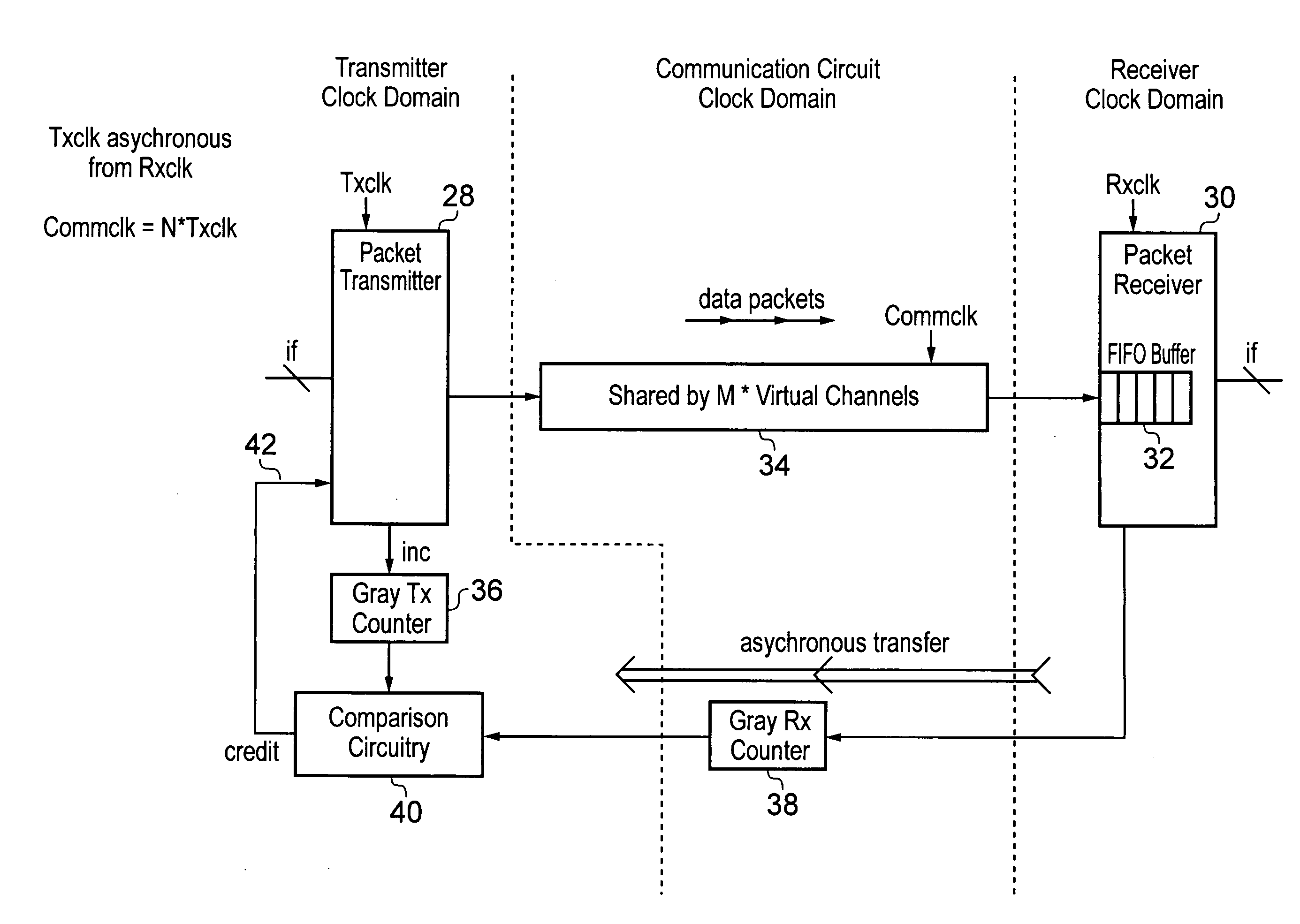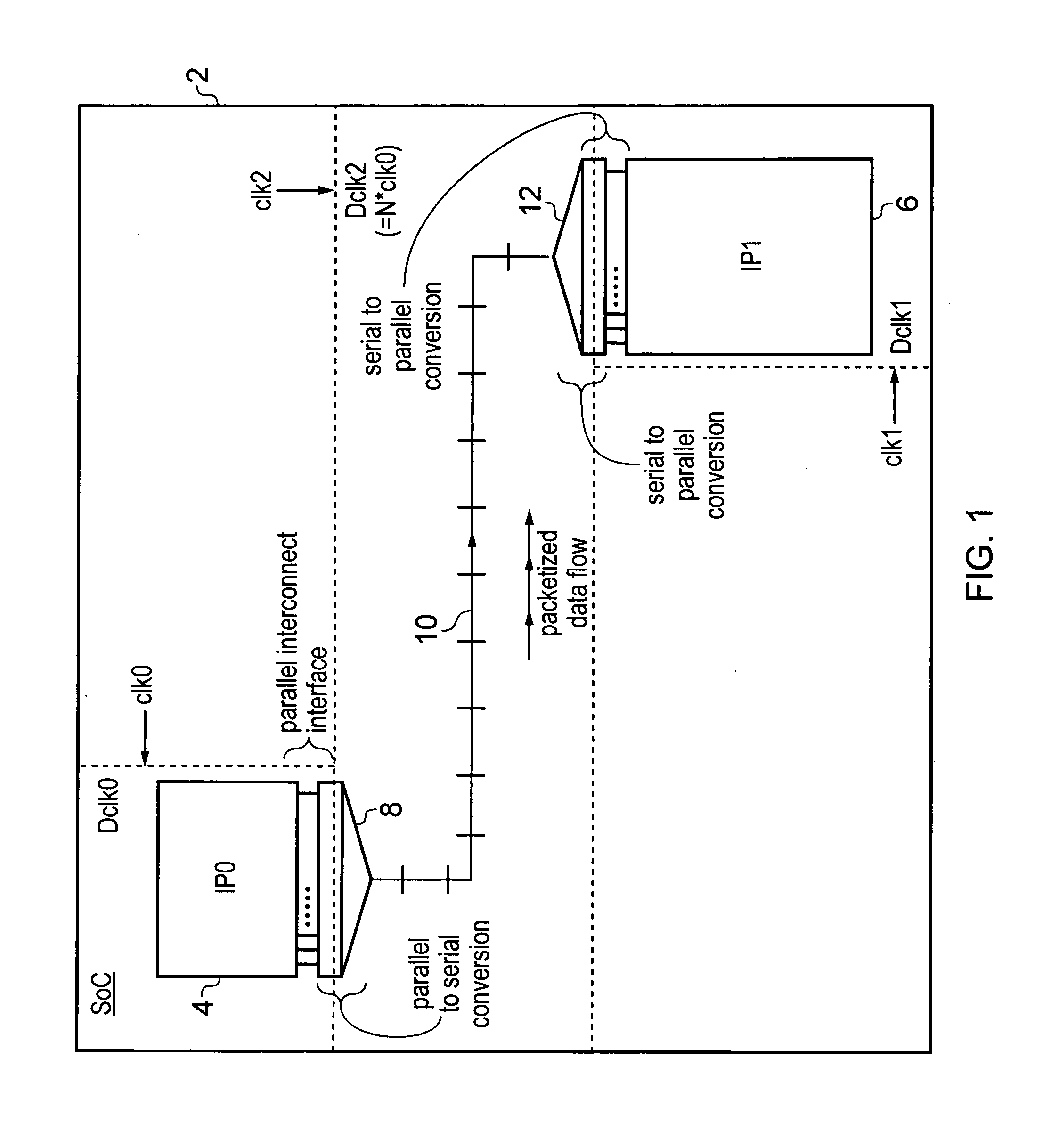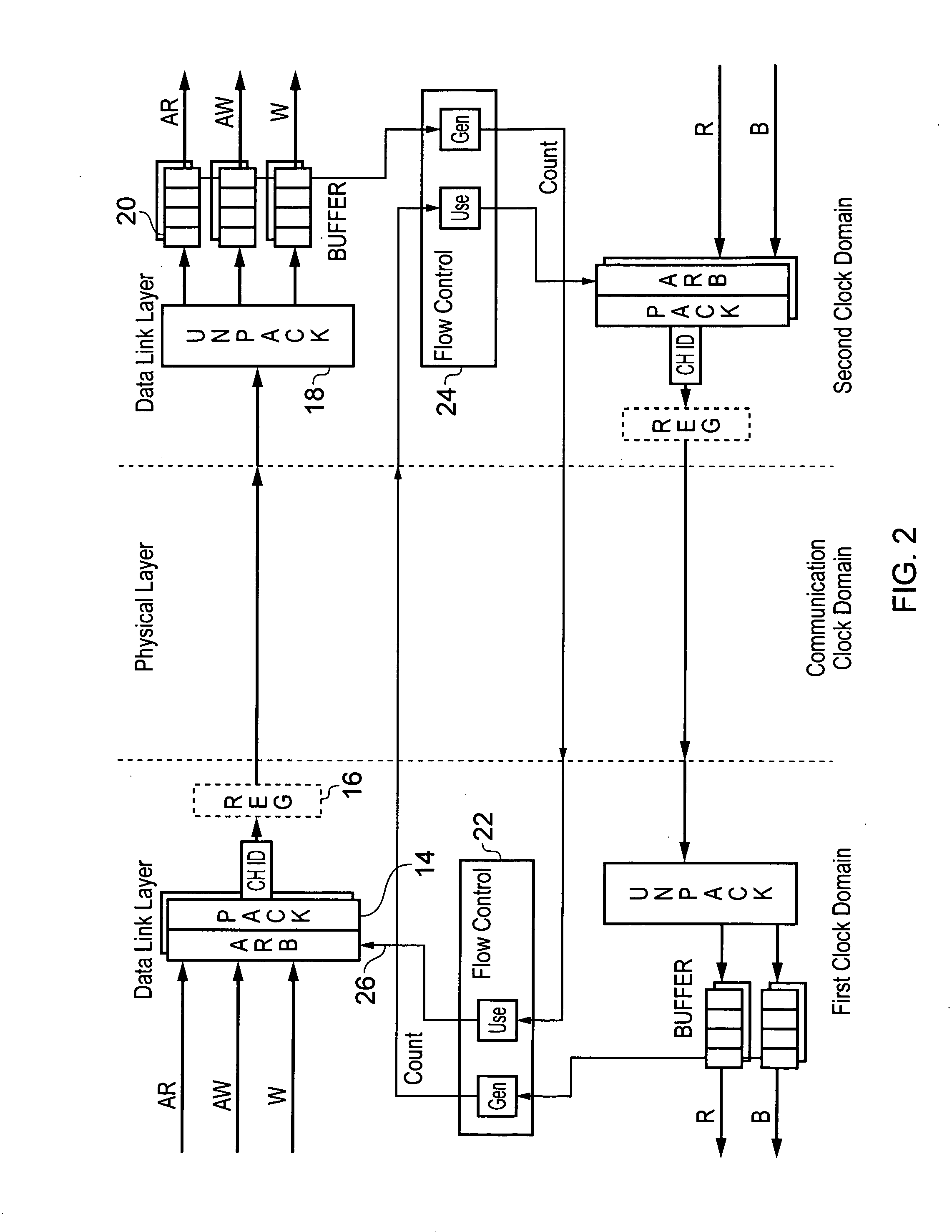Data packet flow control across an asynchronous clock domain boundary
a data packet and clock domain technology, applied in the field of data processing systems, can solve the problems of circuit area and resource consumption, and difficulty in passing data packets and associated control signals, so as to reduce the risk of data loss and ensure transmission.
- Summary
- Abstract
- Description
- Claims
- Application Information
AI Technical Summary
Benefits of technology
Problems solved by technology
Method used
Image
Examples
Embodiment Construction
[0071]FIG. 1 schematically illustrates a system-on-chip integrated circuit 2 including a source functional block 4 and a destination functional block 6 between which it is desired to pass signals. The source functional block 4 and the destination functional block 6 can take a variety of different forms, e.g. a processor core, a graphics processing unit, a memory controller, an input / output controller, a memory controller etc. Such functional blocks 4, 6 are conventionally provided with a parallel interconnect interface, such as an AXI interface as designed by ARM Limited of Cambridge, England. Such a parallel interconnect interface is wide and may include several hundred bit line signals. In order to efficiently transfer the signals from this wide parallel interconnect interface across the system-on-chip integrated circuit, the present technique uses parallel-to-serial conversation which converts the parallel interconnect interface signals into a plurality of data packets. This conv...
PUM
 Login to View More
Login to View More Abstract
Description
Claims
Application Information
 Login to View More
Login to View More - R&D
- Intellectual Property
- Life Sciences
- Materials
- Tech Scout
- Unparalleled Data Quality
- Higher Quality Content
- 60% Fewer Hallucinations
Browse by: Latest US Patents, China's latest patents, Technical Efficacy Thesaurus, Application Domain, Technology Topic, Popular Technical Reports.
© 2025 PatSnap. All rights reserved.Legal|Privacy policy|Modern Slavery Act Transparency Statement|Sitemap|About US| Contact US: help@patsnap.com



